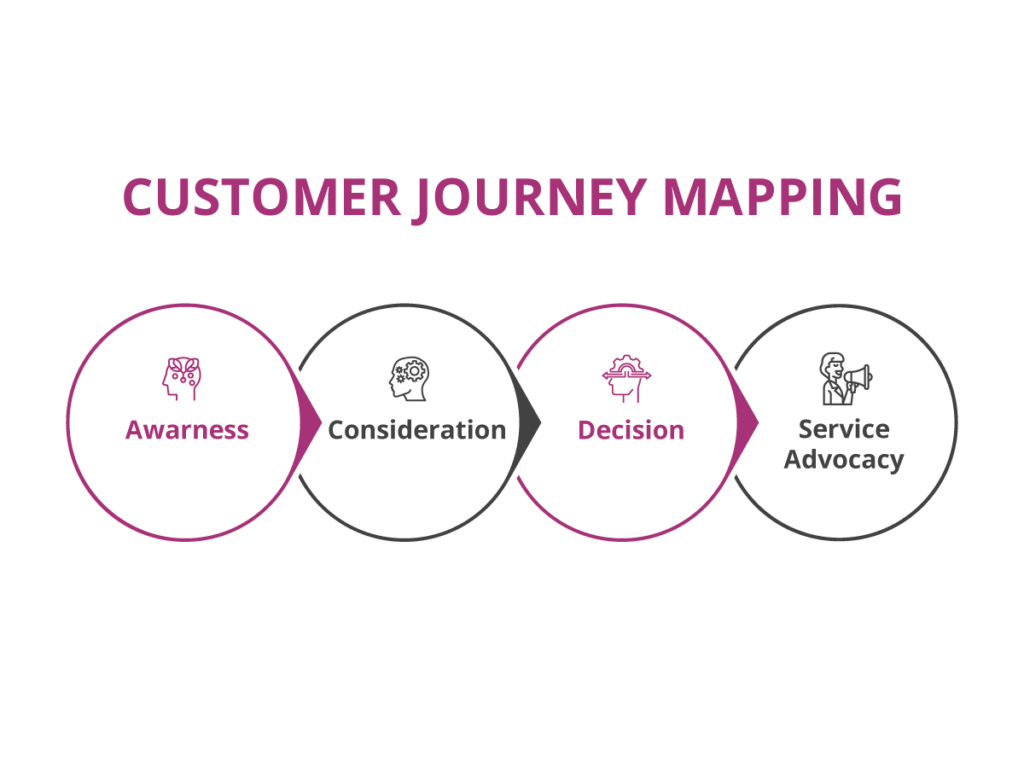
Customer experience management is a critical aspect of modern business operations. Organizations that prioritize customer experience management aim to provide a seamless and satisfactory customer experience at every touchpoint of the customer journey. This approach enables organizations to retain existing customers, attract new ones, and build a positive brand reputation.
Customer experience management involves collecting, analyzing, and acting upon customer feedback in real-time to understand customer expectations and preferences. It includes various aspects such as monitoring customer interactions, analyzing customer feedback, identifying customer pain points, and implementing improvements to enhance the customer experience.
The central idea is that companies need to start implementing effective customer experience management strategies, organizations can gain a competitive advantage by differentiating themselves from their competitors based on their customer service quality. This approach can also help to increase customer loyalty, reduce churn rate, and improve customer retention.
This blog post will explain everything you need to know about customer experience management and why companies need to maintain it. So without waiting further, let’s delve into it.
CX Management: Learning The Basics

Organizations have a significant opportunity to develop a close emotional connection with their customers through their customer experience. This can improve brand perception, customer loyalty, and advocacy, ultimately sustaining revenue generation.
To achieve effective customer experience management, the top CX management of an organization must be involved in the process. They should strategize contact center operations and understand the connection between contact center operations, marketing, sales, and customer success teams. This alignment can improve customer interactions and enhance the core offering of the brand value.
Incorporating cross-functional inputs can help break down department silos and lead to more effective solutions for customer inquiries. This approach can ultimately boost overall brand alignment and resource distribution operations.
The Value of Customer Experience Management
The perception customers have of a brand is based on their experience, which ultimately impacts sales volume. Brands must stay updated on customer expectations to maintain a positive customer experience, which can lead to numerous benefits.
One primary benefit is the lower lifecycle cost of customers. Acquiring a new customer is typically much costlier than retaining existing ones, and research shows that a 5% improvement in retention can increase profits by almost 25%. This is because existing customers can lead to repeated conversions, reducing the acquisition cost cycle. Additionally, satisfied customers are less likely to need convincing since they are already happy with the brand’s offerings.
Improved Operational Efficiency
Enabling customers to provide feedback and actively listening to it can aid brands in identifying process bottlenecks and implementing improvements. This approach can also help organizations understand customer journeys and sustain or refine them as necessary.
Boosts the Morale of Contact Center Employees
Implementing a sustainable feedback collection method can lead to improved morale among contact center agents as they can self-evaluate their role in enhancing the customer experience. Happy employees are more likely to keep customers engaged and solve their issues more effectively, resulting in a sustainable improvement curve.
Improves The Brand Loyalty And Advocacy
A satisfied customer is a brand’s best ambassador. A seamless customer experience can significantly improve customer loyalty and make them more inclined to stick with the brand. These loyal customers can provide feedback and endorsements that can act as a powerful motivators for further acquisition and conversion.
Gather Information About Competitors
Customers often choose to purchase from a brand when they believe that its products or services offer more value than its competitors. To make an informed buying decision, customers typically conduct extensive research.
Creating a positive customer experience can enable brands to gather information about their competitors’ activities and offerings. When the customer experience is well-nurtured, it can be a valuable tool for gathering such data.
How To Improve CX Management
Based on the customer expectations and the assessment of their requirements, the following are some of the best strategies to improve the customer experience.
Segmentation And Customer Analysis:

To conduct audience analysis effectively, it’s important to understand customers, their needs and challenges during the conversion process, and their expectations of your products and services.
After collecting this information, brands can use it to segment their customers according to various attributes. This is crucial in creating personalized responses based on their personas during customer interactions
Customers Journey Mapping

Segmenting customers based on their attributes is just the first step. To truly understand the customer experience, it’s important to examine their user journey from the initial contact until after conversion.
Since every customer has a unique persona, their journey, and challenges will be different. Analyzing each step of this journey can help brands identify and remove obstacles in the path to conversion and reduce churn.
By understanding the specific pain points and challenges that customers face at different stages of their journey, brands can tailor their approach and provide relevant solutions that improve the overall customer experience.
Evaluating Customer Expectations
When a customer engages with your brand, they anticipate a distinctive experience that reflects your brand’s identity. This shapes their perception of your brand and allows you to better organize your offerings and communication channels. The crucial element is to provide an unforgettable experience, which fosters greater brand loyalty and increases the likelihood of repeat customer purchases
Strategy And Action Plan
Measuring the success of brand interactions relies heavily on the customer experience, and incorporating emotional appeal can enhance this experience. A well-designed strategy with defined goals and objectives is crucial for generating a positive brand impression that encourages customer loyalty. By reflecting the brand’s unique value proposition, this strategy should motivate customers to engage and form lasting relationships with the brand.
Assessing Touchpoints of Customer Interaction:
The evolution of social media platforms and smartphones has given contact center managers the chance to capture customer feedback from multiple touchpoints. However, handling a vast amount of data can be a challenge.
Brands can overcome this challenge by analyzing the appropriate key performance indicators that reflect customers’ preferences across touchpoints. By combining these insights with effective customer interactions, brands can provide a cohesive experience across channels and platforms, increasing brand loyalty and enhancing the overall customer experience.
Track, Measure, and Analyze:
Although operations and delivery are critical aspects of contact center operations, monitoring and evaluating customer interactions are equally important. Brands can track customer satisfaction through a variety of methods, such as reviews, anonymous polls, testimonials, and customer feedback.
These approaches enable brands to gain insight into whether they are meeting their customers’ expectations and preferences.
Conclusion
In today’s competitive market, customers have a short attention span for a single brand. A well-designed CX management strategy can minimize the risk of losing customers to competitors.
To design an effective CX management strategy, brands must first understand their customer’s behavior and preferences. This can be achieved by conducting in-depth research and analysis of customer data, including feedback, interactions, and preferences. Brands can also leverage technology to monitor and track customer behavior and interactions across multiple touchpoints.
For more details on how to deliver a seamless customer experience across channels, you can contact us here.
More Related topics:
How to use Outbound Dialer in Marketing ?
>
>
Invygo: ZIWO is Our Golden Ticket For a Better Customer Experience
>





